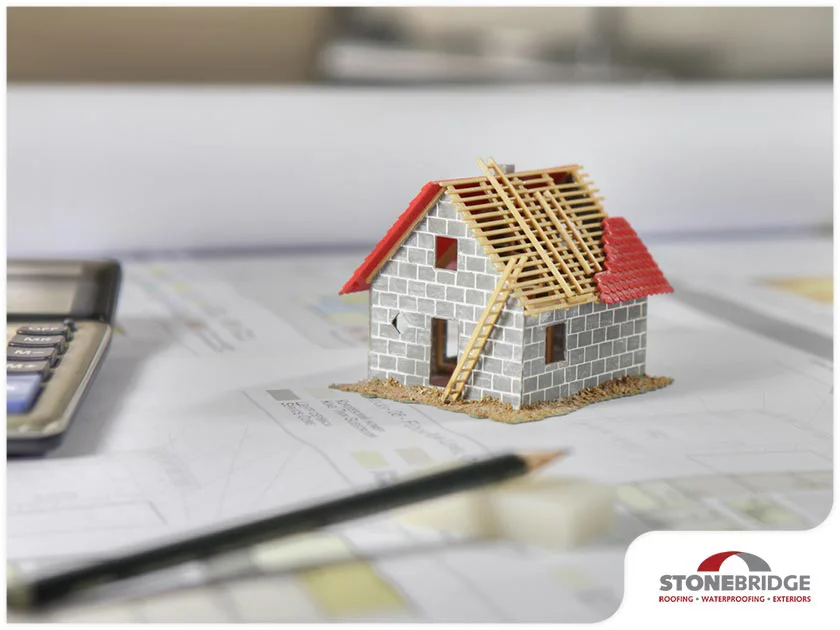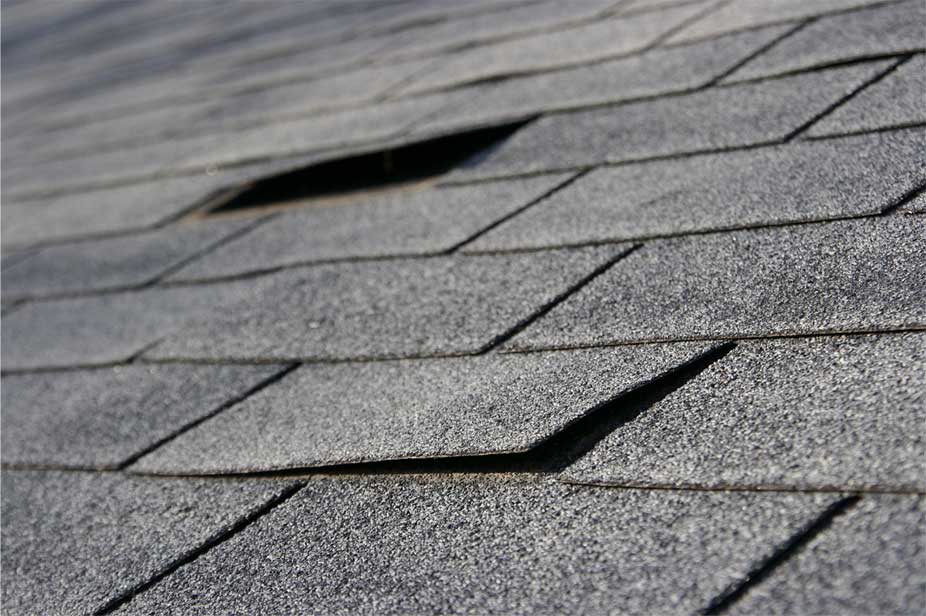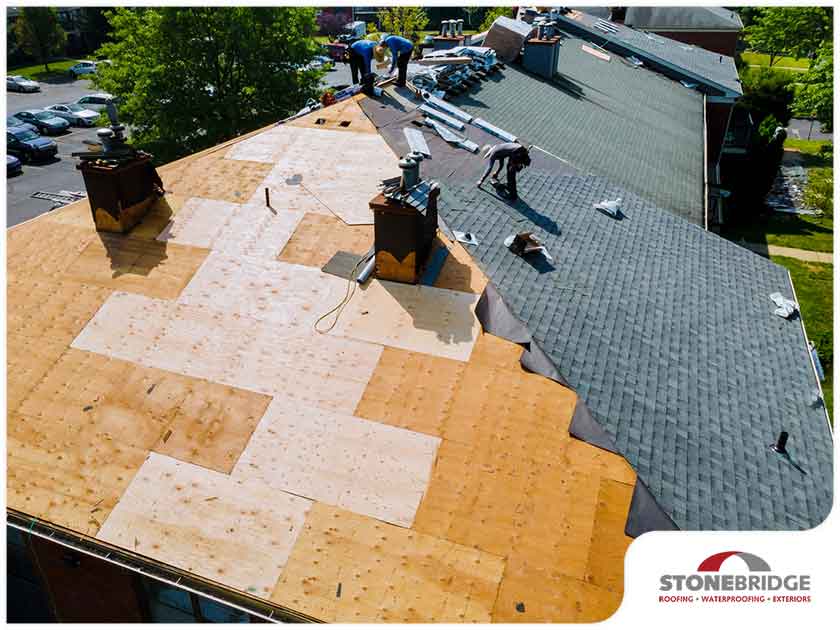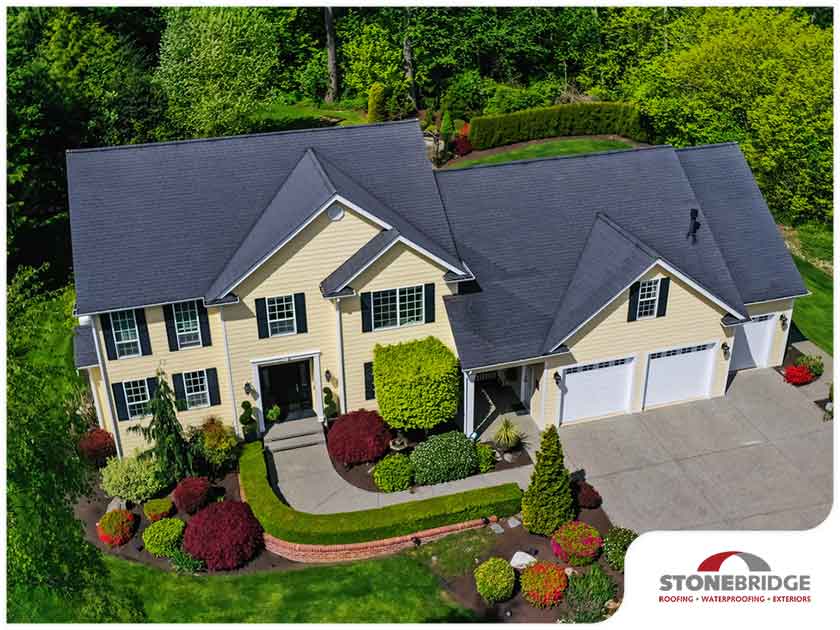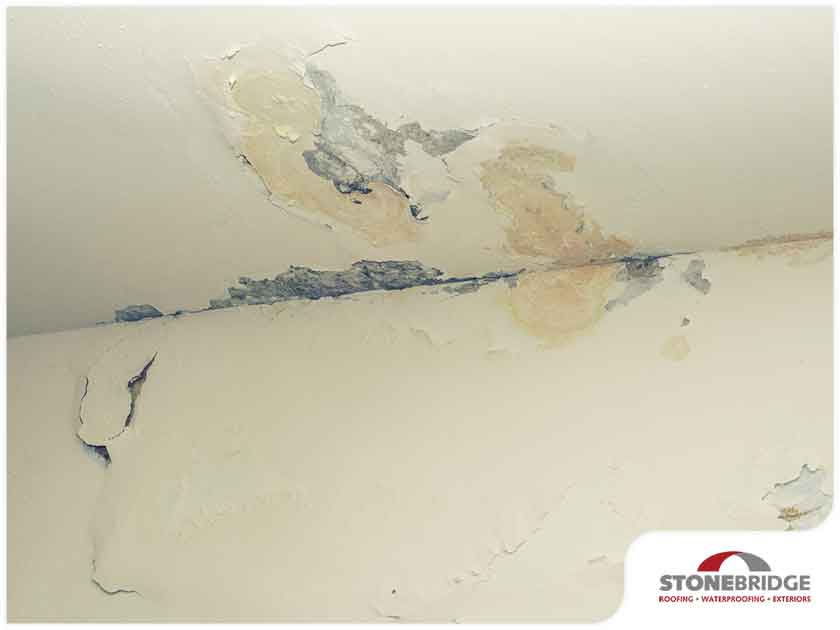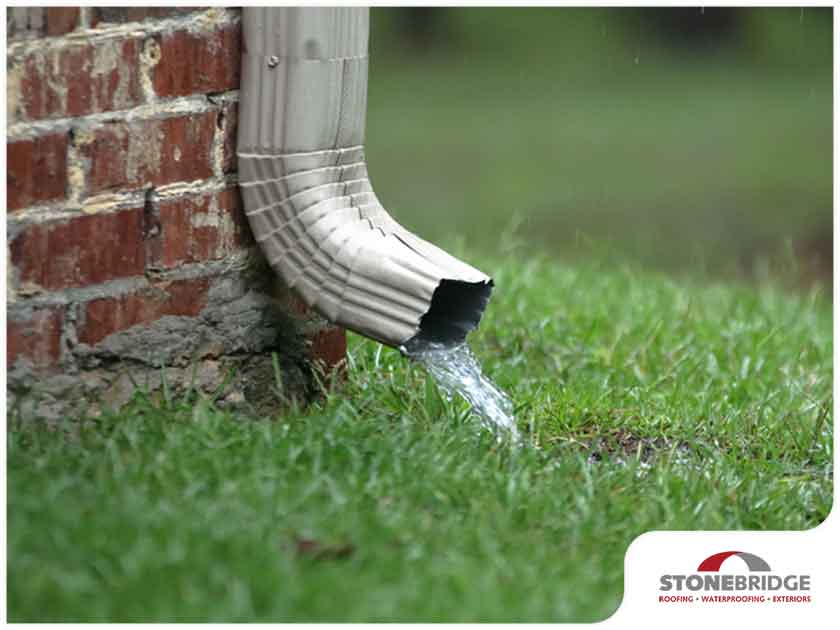Here in Jacksonville, roofs take a beating from salt, wind, UV radiation, and heat. Generally, roofs in northern Florida will last about 15-20 years, but any roof in the region should be inspected every year. Roof repairs should always be done by a local, professional roofing company who is licensed and insured. But how do you know when to call them? Depending on the style of roof, some will show wear better than others, so today we will suggest seven visual signs that your roof needs replacing.
Sign 1: Leaks and Stains
Visible stains on a ceiling or wall may appear to be an obvious roof problem. However, roof leaks can be tricky to locate because water can enter the attic, travel along framing like trusses, and drip somewhere unrelated to the leak. If you see a new stain along an exterior wall or ceiling you may need an emergency repair.
Crawling around in attics with no floor can lead to accidents and personal injury, so leave that task to the pros. Jacksonville roofers have experience working in hot Florida attics and can use that experience to find elusive roof leaks and their sources. Many Jacksonville roofers even wear special boots that allow them to safely walk across trusses and up steep roof angles.
Sign 2: The Roof is Old
It’s a good idea to keep maintenance records on your home like the age of your roof. Most asphalt shingle roofs will last between ten and twenty years, but if your records show it’s time for a replacement, get your roof inspected by a licensed and insured, Jacksonville roofing company. Roof repairs are critical to the health of your home because leaks can cause mold and mildew growth. Even if you see no visual problems yourself, let a pro perform a no-obligation inspection of your roof to prevent future damage.
Sign 3: Look For Debris In Your Gutters
It might seem counterintuitive to look for roof issues in your gutters, but doing so is a smart move. Most Jacksonville roofs are made from materials that wear over time, like fiberglass/asphalt shingles, tiles, and wooden shakes. As the roof wears, the material it sheds will usually collect in the gutters, as the material is too heavy to be washed away.
To perform your own inspection, look for what appears to be sand in the bottom of the gutter. Most of the debris will collect at the lowest point on the gutter, so usually the first place to look is near the downspout. If you cannot see the bottom of the gutter because the debris is blocking your view, a significant amount of the roof has eroded away. If you discover you need an emergency roof repair caused by a strong storm, get a professional inspection by a licensed and insured roofer.
Sign 4: Cracks or Gaps in Your Flashing
Jacksonville roofs can get some severe weather, so even a small crack around roof flashing (thin sheet metal) can allow precipitation to penetrate the roof. Even if the leak only occurs when the rain is blowing sideways, eventually the damage will accumulate. When it does, the roof underlayment and roof decking will begin to soften and rot.
Sign 5: Sags in the Roof
You may have seen older homes with roofs that appear to dip and sag. More often than not, the framing under these roofs has become water damaged, allowing the framing to bend under the weight of the roof. Sagging roofs can still be repaired and reroofed, but care should be taken to hire an experienced professional who is licensed and insured.
Professionals should determine which style of roof will function best in the situation. For example, an inexperienced roofer may be unaware that certain types of roofing require specific roof pitches to work as designed. Using the incorrect roof material on a sagging roof can actually cause more problems than it solves, so always consult a professional in these situations.
Sign 6: Moss and Mold On Your Roof
Moss on your roof indicates a moisture problem severe enough to cause rot. These plants require near constant moisture and limited sunlight, so if they are actively growing on your roof, the roof is never completely drying out. Roofs should be dry in a matter of hours after a rain shower, so if your roof is holding moisture, the moss and mold will be a likely indicator.
Sign 7: Small Visible Damage
Most roofing materials will degrade over time and leave debris in the gutters. A very common find are small bits of roofing material that have dry rotted and broken away. For asphalt shingles, these are often small corners of a shingle, or in the case of shakes, small splinters of wood as these roofing materials begin to degrade with age.
Get Help Today! Contact Stonebridge Roofing
If you are unaware of the age of your roof, but begin to see small pieces of debris at the base of your downspouts, you can assume your roof is approaching its lifespan. This is a perfect time to contact a reputable Jacksonville roofing company, like Stonebridge Roofing and request a roof health report from a local expert roofer. For $150, your roof health report will include an overview of any visible damage (with photos), repair recommendations and an assessment of the lifespan left on your current roof.
Stonebridge Roofing is a licensed and insured, certified roofing installer, so they are approved by the manufacturer to provide a warranty. Stonebridge Roofing can also help with new replacement windows, vinyl siding, gutters, and painting as well. Let Stonebridge Roofing become your first choice for all things exterior. Financing Options are available! Request your free quote today.
